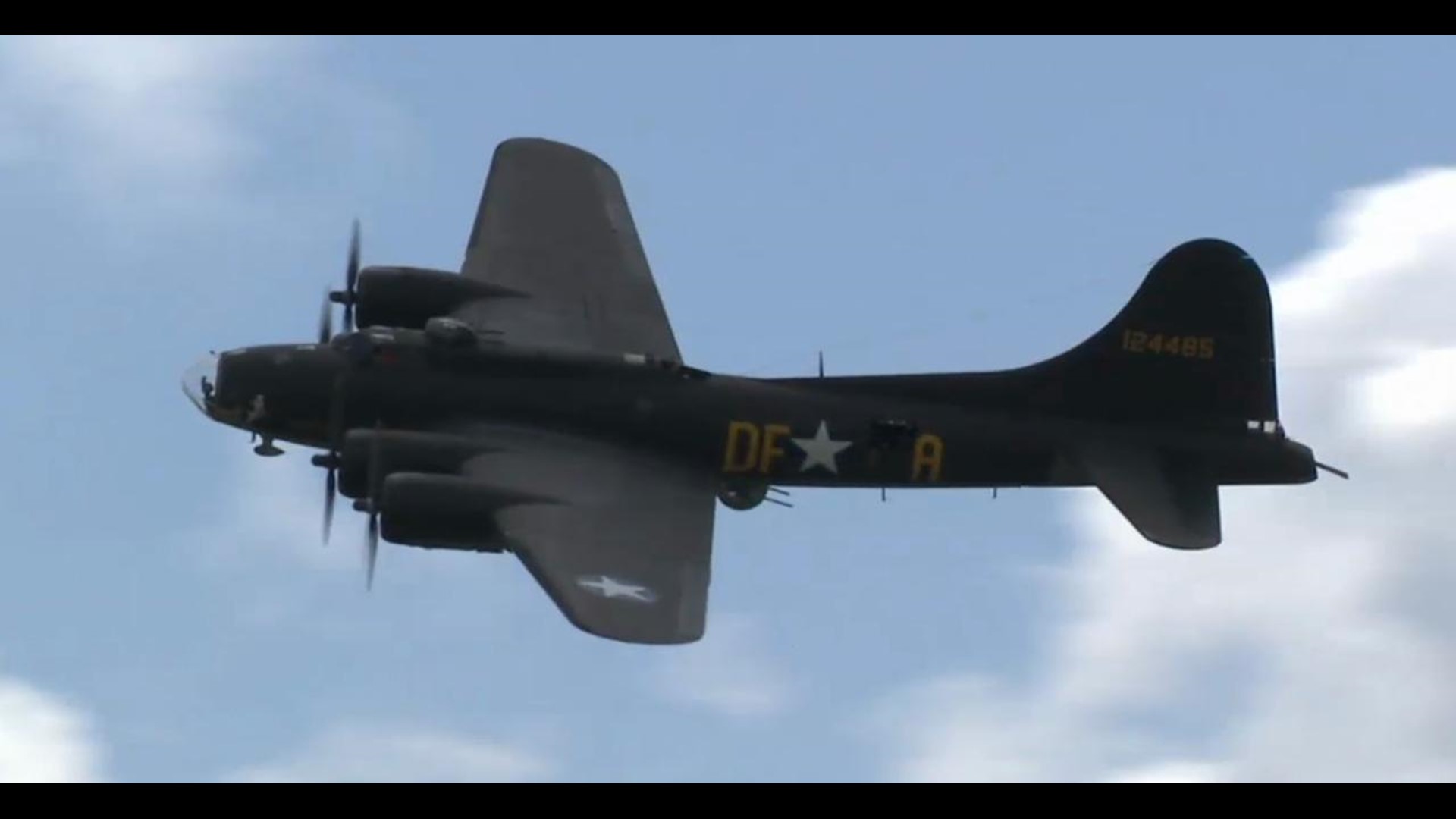At the age of 18, Mike Pohorilla enlisted go to war.
It was 1942, and Porhilla was about to get a lesson on how to fly the B-17.
“It could fly on one engine if we had to,” says Pohorilla.
The B-17 was one of the biggest, fastest bombers of its time, reaching speeds of 250 miles per hour.
On Friday, Pohorilla got to step back in time to 71 years ago. He climbed into a similar B-17 that he was on during 35 missions over Europe.
“The airplanes were not pressurized. What you encountered inside is what you encountered outside" he said.
Porhilla and his crew would need oxygen tanks to fly to 10,000 feet which was bombing altitude.
“Our flight surgeon told us that if we hadn't had oxygen at that altitude, our chances of survival would be about two minutes,” he said.
He says the altitude nearly killed him during one mission.
“My oxygen mask had frozen. I was sprawled on the floor.”
Mike says his crew members rushed to give him oxygen.
“My bladder had emptied, and when that happens, things start to shut down. So you fought elements, as well as fighting the enemy, “ he said.
With the help of the Liberty Foundation, veterans like Pohorilla are getting to relive the days when they fought back against the German Army from the air.
The foundation relies on volunteers to keep the plane in the air. It costs $1.5 million a year to keep it airworthy.
The plane was the same one used in the movie “Memphis Belle” and it is celebrating its 70th anniversary.
The four-engine plane once carried a dozen 500 pound bombs, and it had 12 machine guns including one that extended from its glass nose.
Pohorilla was a navigator in the B-17 and said his crew was responsible for bombing strategic military targets like railroads, oil refineries, and tank plants.
Their ability to find the targets from thousands of feet in the air would be unthinkable by today’s standards.
“You had to do it the hard way, with pencil and paper,” he said.
He says he and his crew never lost a man despite a crash landing in Belgium when they ran out gas.
“We all walked away, “said Pohorilla, as he knocked on a wooden table.
There are only 12 B-17’s flying today.
Those that keep the B-17 in the air say without the public's financial support, they worry the next generation may be denied the chance to reach out and touch this important piece of military history, and learn about the people and planes that fought back Nazism to help win WWII.
WWII Flyer Gets Another Trip In Classic Plane He Once Served On
A central Ohio pilot got the chance to relive his flying days when a B-17 was brought to Columbus.

